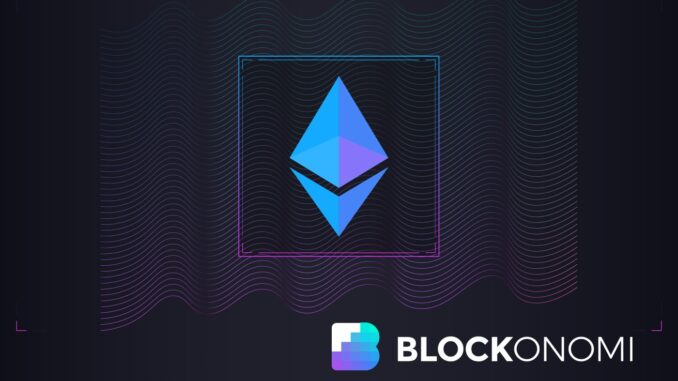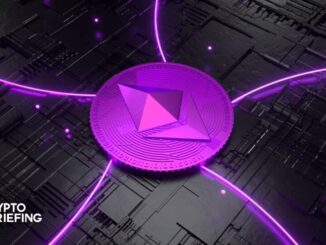
Ethereum Pectra
The Pectra upgrade for Ethereum encountered issues and failed to finalize on the Holesky testnet due to bugs in execution clients.
The complication was associated with how certain clients managed deposit contract addresses.
Pectra encompasses 11 protocol enhancements, including EIP-7702, which introduces account abstraction capabilities.
Testing will persist on the Sepolia testnet on March 5 prior to mainnet implementation.
The upgrade will elevate validator staking limits from 32 to 2,048 ETH and enhance blob capacity by 50%.
Ethereum’s recent upgrade, labeled Pectra, faced a technical hurdle on Monday when it did not finalize correctly on the Holesky testnet. The test was initiated at 4:55 PM ET but could not achieve finality as per data from Beacon Chain.
The complication arose just as developers commenced testing the package of 11 protocol enhancements that constitute Ethereum’s most significant update in nearly a year. Finality is a crucial aspect in Ethereum, where transactions become irreversible after around 13 minutes. In the absence of finality, the network cannot assert that transactions will remain unaltered or unaffected.
Technical specialists attributed the issues to problems with execution clients as the primary factor. Georgios Konstantopoulos, the chief technology officer at crypto investment firm Paradigm, mentioned on social media that the bug was confined to execution clients that “failed to incorporate the correct deposit contract address.”
Joshua Cheong from Mantle Network, an Ethereum Layer-2 protocol, explained to Decrypt that the problem revolved around “the management of deposit contract addresses by these clients.” This caused network instability, as the Pectra upgrade shifts deposit tracking from the Consensus Layer to the Execution Layer.
The issue was traced back to configuration mistakes in some execution layer clients that disrupted the hash verifications essential for withdrawals and deposits. These hash verifications are vital for the network’s proper operation.
Despite the challenge, many experts underscored that discovering such bugs is precisely the reason testnets exist. “Holesky and other testnets are designed to uncover issues,” Konstantopoulos remarked, emphasizing the importance of testing before changes impact the main Ethereum network.
The Ethereum Foundation has outlined the next testing phase on the Sepolia testnet for March 5 at 7:29 AM UTC. Only after both testnet implementations are successful will developers select a date to activate Pectra on the mainnet.
What’s Ahead for Ethereum Users
Pectra incorporates several significant upgrades that users have been anticipating. The standout feature is EIP-7702, conceived by Ethereum co-founder Vitalik Buterin. This alteration enables wallets to temporarily function as smart contracts during transactions, facilitating features such as batch operations and gas fee sponsorships without altering accounts permanently.
An additional major enhancement is EIP-3074, which improves account abstraction by permitting externally owned accounts to carry out batch transactions and sponsored gas payments. Gas sponsorship is a valuable feature allowing users to execute transactions from an account even when they lack Ether to cover gas fees.
For validators who contribute to securing the network, Pectra introduces a significant alteration to staking limits. Currently, validators can stake a maximum of 32 ETH. Following the upgrade, this limit will expand to 2,048 ETH, potentially transforming how large entities engage with the Ethereum network.
The upgrade will also amplify Ethereum’s blob capacity by 50%. Blobs serve as a method for data storage utilized by Layer-2 blockchains to relay compressed transaction data to the main Ethereum chain. The existing structure supports an average of three blobs per block, but this will rise to six after the deployment of Pectra.
This enhancement builds on the earlier Dencun upgrade from March 2024, which had already made Layer-2 transactions significantly cheaper. The increased capacity is expected to further enhance scaling and minimize costs for users.
The testnet challenges arise during a period of increasing demand on Ethereum to accelerate its development timeline. Last month, researchers at Paradigm contended that “Ethereum is capable of more” than its historical rate of “approximately one change annually.”
This tension between thorough testing and expedited rollout has become increasingly evident as Ethereum’s position in the blockchain ecosystem expands. Recent discussions among core developers have revolved around hastening the network’s roadmap.
In a meeting held in February, Ethereum developers opted to implement future protocol upgrades at a quicker pace. Nixo Rokish from the Ethereum Foundation’s protocol support team characterized this as “less hesitance about scope and more forceful presentation of opinions.”
The decision to segment the Pectra upgrade into no fewer than two parts reflects this new methodology. The first segment is anticipated to launch around February 2025, demonstrating a more consistent release schedule compared to prior upgrades.
For users and developers alike, the Pectra upgrade continues Ethereum’s trajectory of enacting meaningful changes to both the developer experience and everyday utility. Previous enhancements like Dencun and Shapella have already bolstered the network’s capabilities.
The Ethereum Foundation has yet to respond to the testnet complications. Nonetheless, the technical community remains hopeful that these issues can be addressed before the next testing stage commences.
As testing carries on, the blockchain community will be observing closely to assess how swiftly developers can rectify the problems identified on the Holesky testnet. The effectiveness of these resolutions will determine when users can anticipate seeing Pectra’s enhancements reach the main Ethereum network.









Be the first to comment